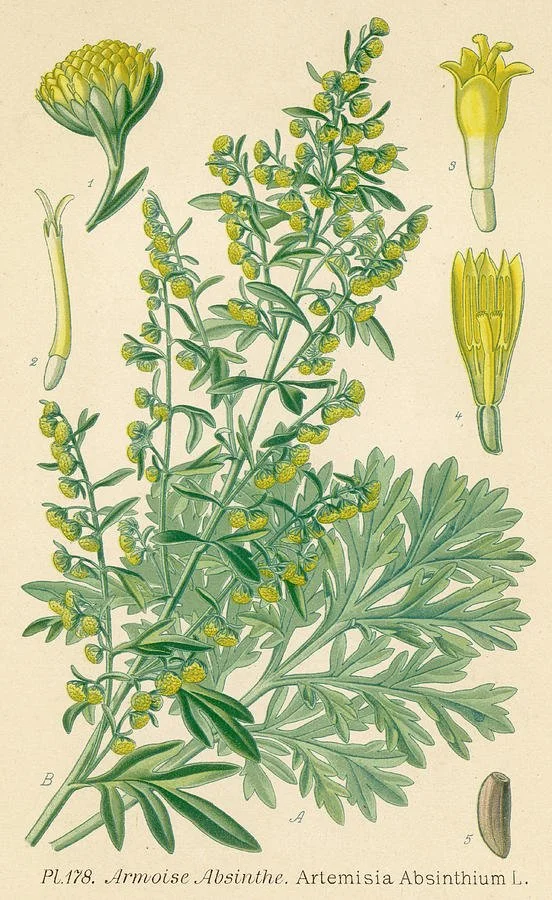
Artemisia absinthium
Common Name: Wormwood
Family: Asteraceae (Aster family)
Parts used: Leaf
Constituents: Volatile oils (thujone), sesquiterpene lactones (absinthin), lignans
Taste/smell: Bitter
Tendencies: Cooling
Actions
Bitter digestive stimulant/Carminative
Antimicrobial
Antiparasitic/Anthelmintic/Vermifuge
Antidepressant
Uses
Bitter digestive stimulant/Carminative:
Hypochlorhydria
Non-ulcer dyspepsia
Maldigestion
Anorexia
Antiparasitic/Anthelmintic/Vermifuge:
Intestinal worms, especially roundworm and pinworm
Antidepressant:
Depression
Contraindications
Pregnancy and lactation
Large internal doses
Active peptic ulcers (particularly duodenal ulcers
Gastritis
Hyperchlorhydria
Gastroesophageal reflux disease (GERD)
Biliary obstruction
Acute diarrhea
Acute cholelithiasis
Long-term use or excessive doses of the seeds can cause UTIs (urinary tract infections)
Allergic hypersensitivity to Asteraceae family (i.e. arnica, chamomile, feverfew, ragweed, tansy, yarrow)
Adverse Effects
None with small doses
Toxicity
Abortion
Vomiting
Severe diarrhea
Urine retention
Stupor
Convulsions
Paralysis
Death
Interactions
None
References:
Brinker, Francis J. Herbal Contraindications and Drug Interactions plus: Herbal Adjuncts with Medicines. Eclectic Medical Publications, 2010.
Kaufmann, Taylor. NPLEX II Study Guide. Wild Brilliance Press, 2019.
Lun, Vincent, et al. Core Knowledge for NPLEX 2. 1st ed., Marano Publishing Incorporated, 2014.
Marciano, Marisa, and Nikita A. Vizniak. Evidence Informed Botanical Medicine. Professional Health Systems Inc., 2015.
Sherman, John. The Complete Botanical Prescriber. Four Seasons Pub.
Skenderi, Gazmend. Herbal Vade Mecum: 800 Herbs, Spices, Essential Oils, Lipids, Etc., Constituents, Properties, Uses, and Caution. Herbacy Press, 2004.
Tilgner, Sharol. Herbal Medicine: From the Heart of the Earth. Wise Acres, 2020.






